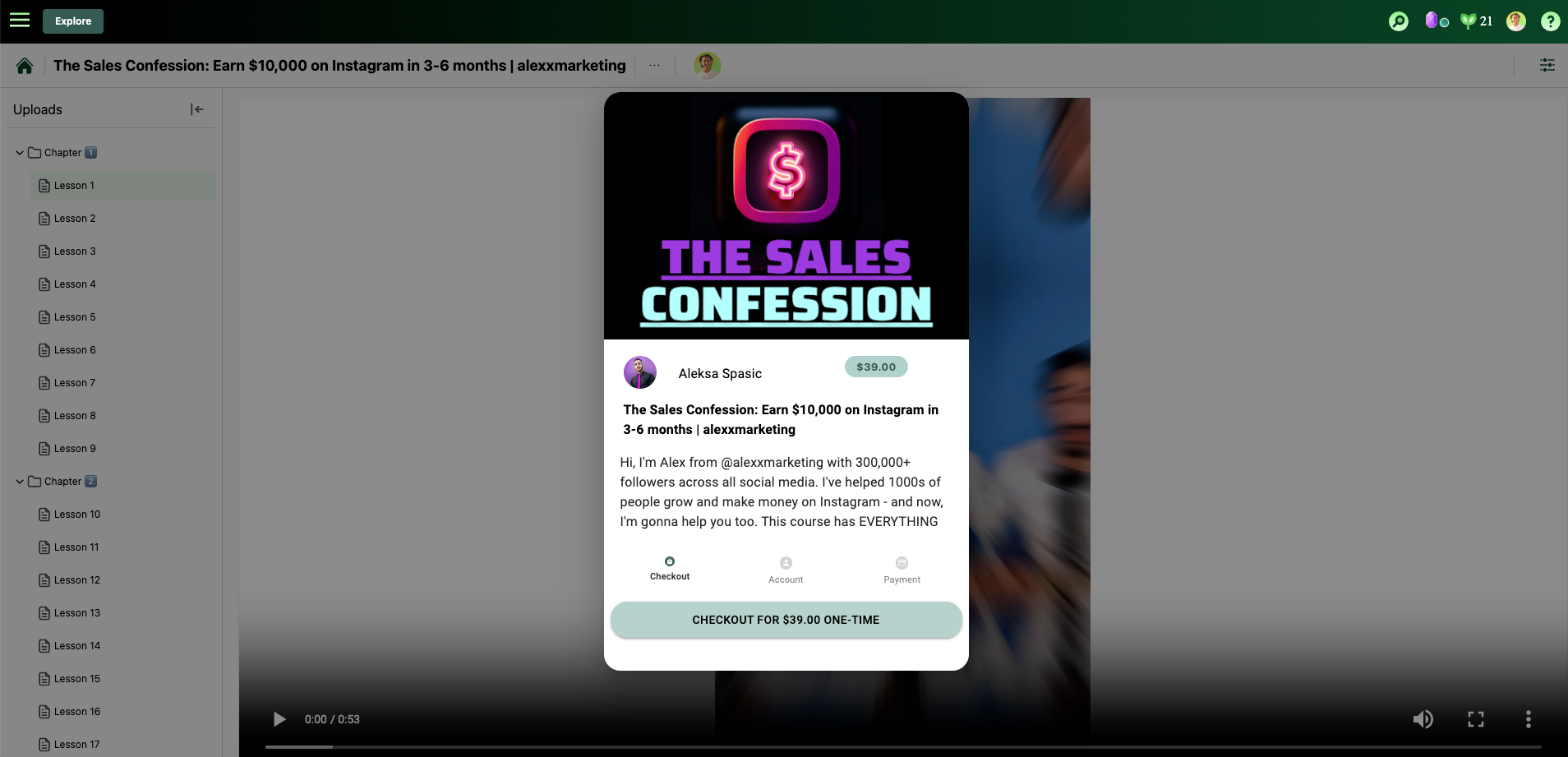How to Automate Digital Products

Automating the creation, marketing, and sales processes of digital products can streamline operations and maximize efficiency. Here's a guide on automating various aspects of digital product creation and sales.
Steps to Implement Automation
- Identify Processes for Automation: Assess your workflows to identify repetitive and time-consuming tasks.
- Choose the Right Tools: Select automation tools that fit your needs and integrate well with your existing systems.
- Plan and Design Automation Workflows: Map out the processes and define how automation will be implemented.
- Implement Automation: Start with small, manageable tasks and gradually expand automation across your workflows.
- Monitor and Optimize: Continuously monitor the performance of automated processes and make adjustments as needed.
Automating a business for selling digital products such as eBooks, online courses, and Google Sheets involves several key steps and tools across various stages of the business process, from product creation and marketing to sales, delivery, and customer support. Here’s a comprehensive guide to automating this type of business:
1. Product Creation and Management
- eBooks: Use tools like Canva AI for designing and formatting.
- Online Courses: Create courses using platforms like Kahana, which offers the ability to upload course materials to hubs and then charge to access them on a one-time or monthly subscription basis.
- Google Sheets Templates: Design templates in Google Sheets and use scripts or add-ons to automate functions within the sheets.
2. Website and Sales Automation
- E-commerce Platform: Use an e-commerce platform like Shopify, WooCommerce, or BigCommerce. These platforms offer plugins and integrations to automate product listings, inventory management, and sales processes.
- Digital Product Delivery: Use services like Kahana to automate the delivery of digital products securely. Kahana can handle payments, secure file delivery, and billing for your customers.
3. Marketing and Sales Funnels
- Email Marketing Automation: Use tools like Mailchimp, ConvertKit, or Beehiv to automate email marketing campaigns, segmentation, and follow-ups. You can embed your digital products into your email sequences using hub links from Kahana, as well.
- Social Media Automation: Schedule and automate social media posts using tools like Buffer, Hootsuite, or Later to keep your audience engaged.
4. Customer Support Automation
- Chatbots: Implement chatbots on your website using platforms like Intercom, Crisp, or Zendesk Chat to provide instant responses to customer inquiries. You can also chat directly with customers using Kahana's built-in chat features.
5. Content Management and Delivery
- Learning Management System (LMS): For hosting digital products in creative ways and enabling people to peruse a larger portfolio, you can also embed them into Notion workspaces. For example, if you paste a Kahana hub link into a Notion workspace, it will automatically allow customers to check out your digital products, pay, and access your digital products easily.
- Membership Sites: Use platforms like Kahana to manage memberships and automate access to premium content.
6. Analytics and Reporting
- Website Analytics: Use Google Analytics, Mixpanel, or Hotjar to automate data collection and reporting on your website traffic and user behavior.
- Sales and Marketing Analytics: Use tools like Google Data Studio, Tableau, or Power BI to create automated dashboards and reports on sales performance, marketing campaigns, and customer engagement.
7. Financial Automation
- Invoicing and Accounting: Automate invoicing and accounting with tools like Wave and Stripe. These tools can integrate with your e-commerce platform to automatically record sales and expenses.
- Payment Processing: Use automated payment gateways and recurring billing systems to handle subscriptions and one-time purchases. Note: automated payment gateways and recurring billing systems are already available to you when you create a Kahana account.
Step-by-Step Implementation Plan
- Plan and Set Up Your Digital Storefront
- Choose an e-commerce platform (Linktree, Pensight, Shopify, WooCommerce, etc.).
- Set up product listings for eBooks, courses, and other digital products.
- Automatically integrate payment gateways.
- Create and Automate Marketing Campaigns
- Set up email marketing automation (Mailchimp, ConvertKit).
- Design and implement sales funnels (ClickFunnels, Leadpages).
- Schedule social media posts (Buffer, Hootsuite).
- Automate Content Delivery and Membership Management
- Use a website or membership platforms to automate digital product delivery and access management.
- Monitor and Optimize
- Set up analytics tools to monitor website traffic, sales performance, and customer engagement.
- Continuously optimize your processes based on data insights.
By integrating these automation strategies, you can streamline your operations, improve customer experience, and scale your business effectively.
How Do I Create My Own Digital Product?
To create your own digital product, follow these steps:
- Identify a Niche: Research market demand and identify a niche or problem that your digital product can address.
- Choose a Format: Determine the type of digital product you want to create, such as ebooks, online courses, software, or templates.
- Create Content: Develop high-quality content that provides value to your target audience. Use professional tools and resources to ensure polished results.
- Design and Packaging: Design visually appealing packaging for your digital product, including cover art, branding elements, and user-friendly interfaces.
- Test and Iterate: Test your digital product with beta users and gather feedback to make improvements before launch.

Start selling hubs of digital products online
Kahana is a free collaborative platform and marketplace that allows you to sell digital products online.
How Do I Get People to Buy My Digital Product?
To attract customers and drive sales for your digital product, implement the following strategies:
- Offer Value: Highlight the unique benefits and features of your digital product to showcase its value proposition to potential buyers.
- Build an Audience: Cultivate a loyal audience through content marketing, social media engagement, and email marketing.High-Profit
- Create Compelling Sales Pages: Develop persuasive sales pages with clear messaging, testimonials, and visuals to entice visitors to make a purchase.
- Implement Marketing Automation: Use email marketing automation, retargeting ads, and sales funnels to nurture leads and convert them into customers.
- Leverage Social Proof: Showcase customer testimonials, case studies, and user reviews to build trust and credibility with potential buyers.
Is Selling Digital Products Profitable?
Selling digital products can be highly profitable due to the scalability and low overhead costs associated with digital distribution. Factors that contribute to profitability include:
- High-Profit Margins: Minimal production and distribution costs result in higher profit margins compared to physical products.
- Global Reach: The internet allows digital products to reach a global audience, maximizing revenue potential.
- Recurring Revenue: Subscription-based models and digital memberships offer recurring revenue streams over time.
If you would like help with setting up your digital products business, feel free to reach out to our team.

Talk with a Kahana representative
Fill out your information and a Kahana team representative will reach out to you. Have a simple question? Search our library of articles
